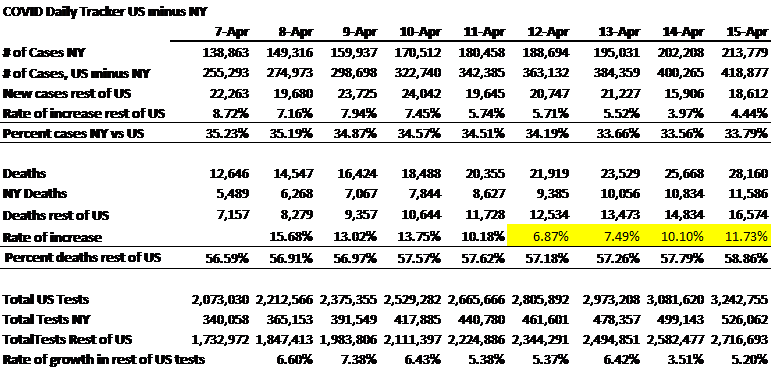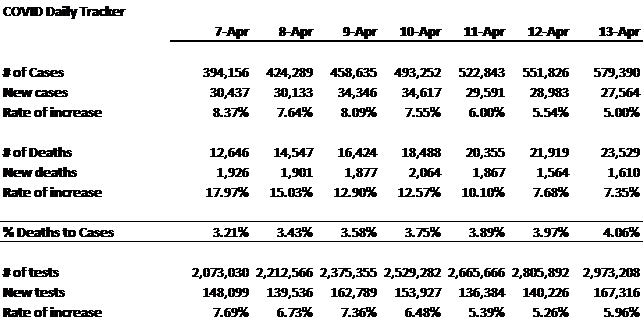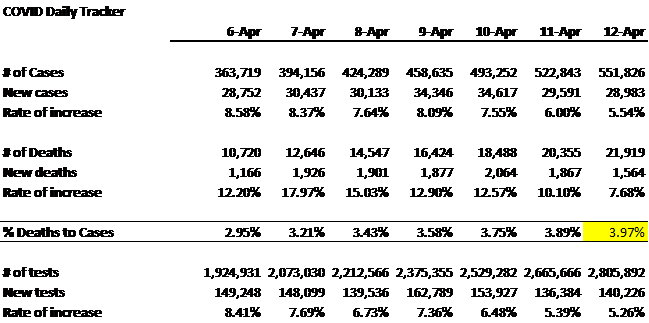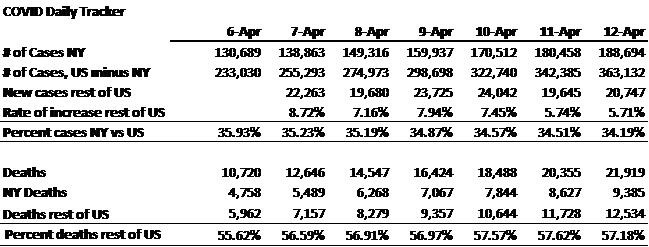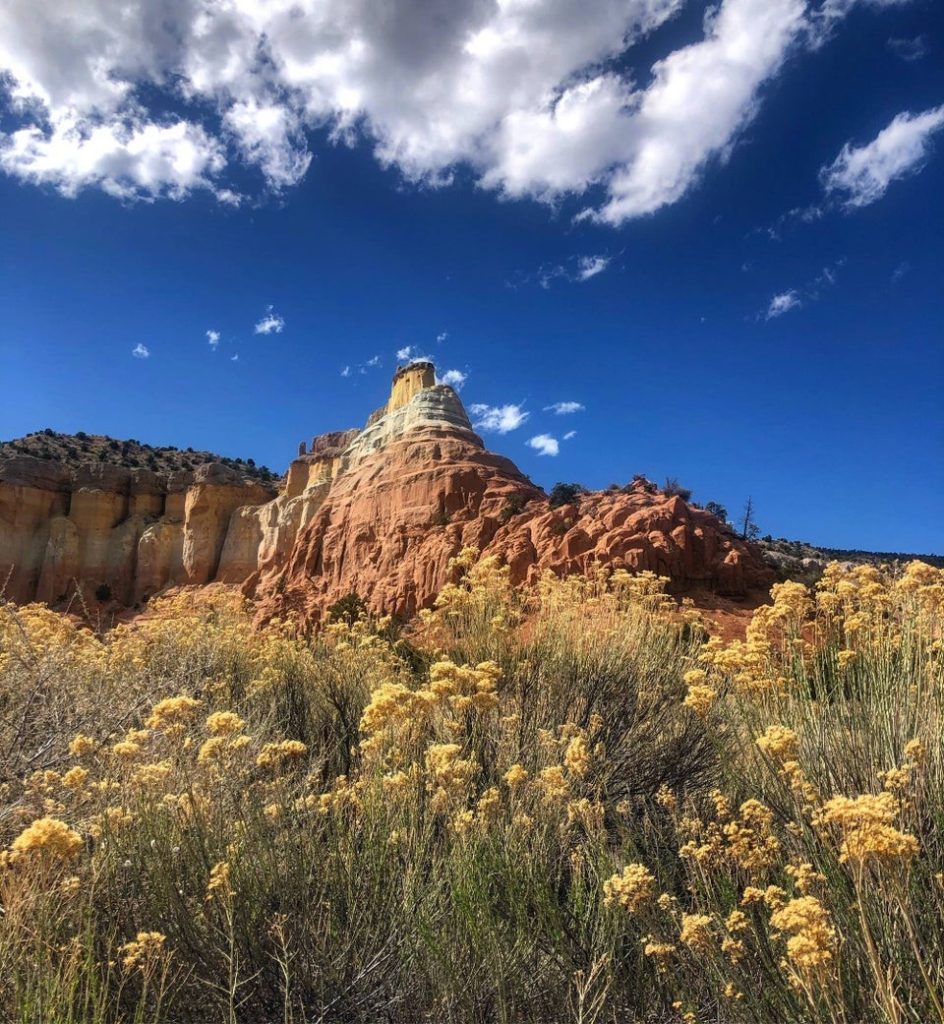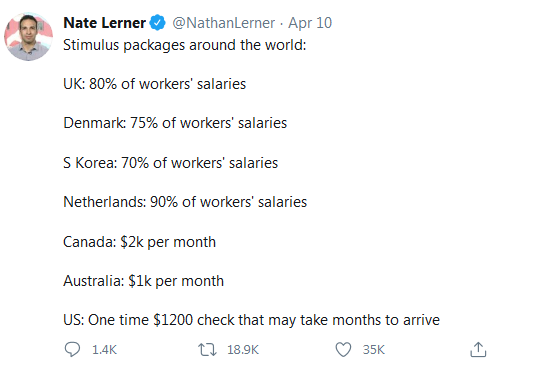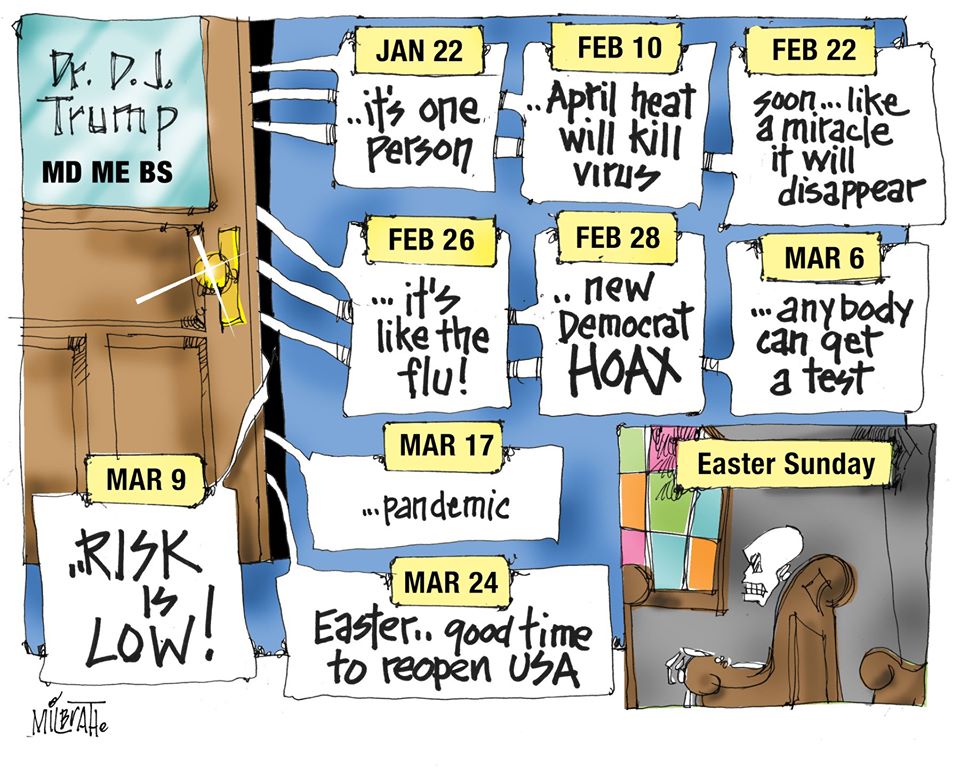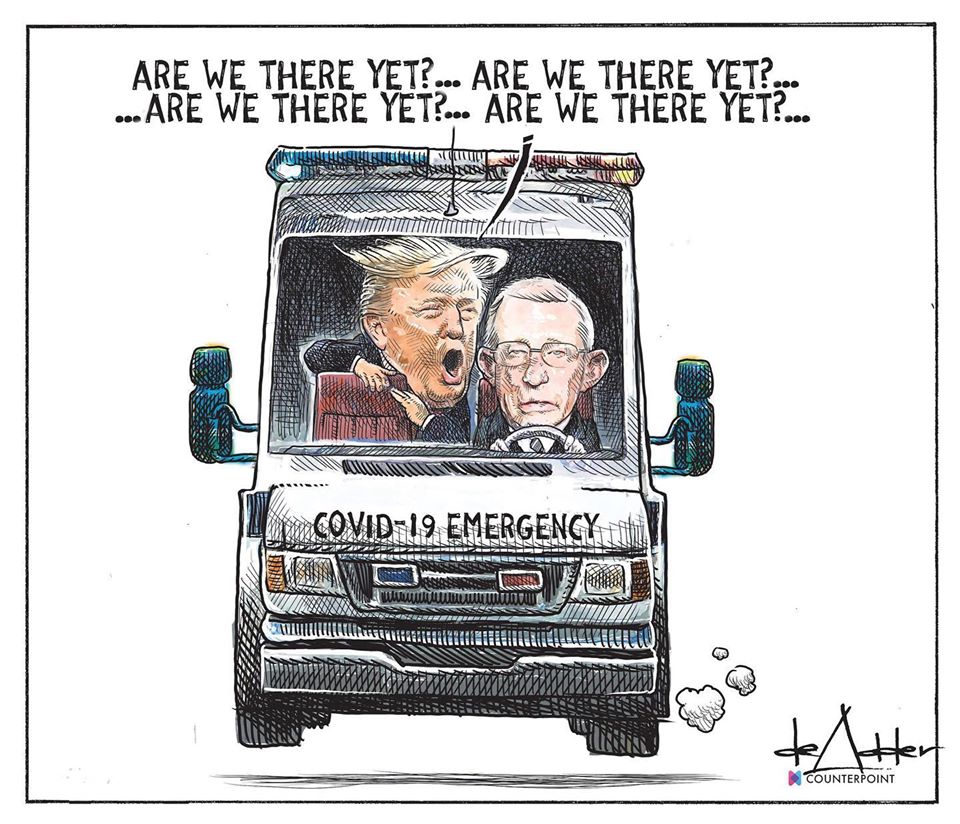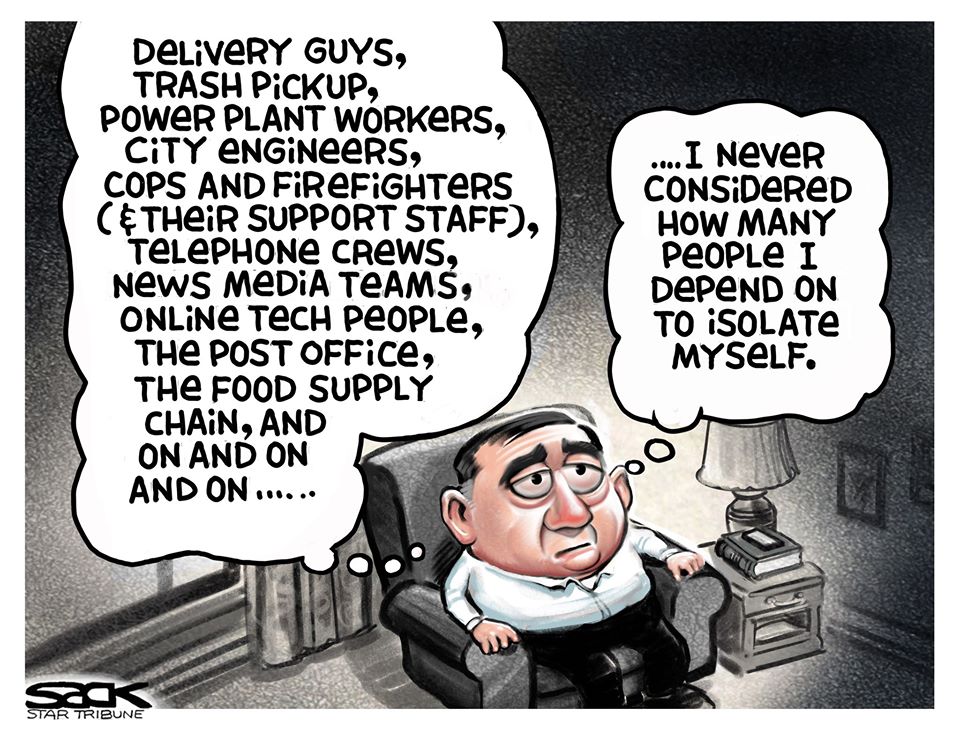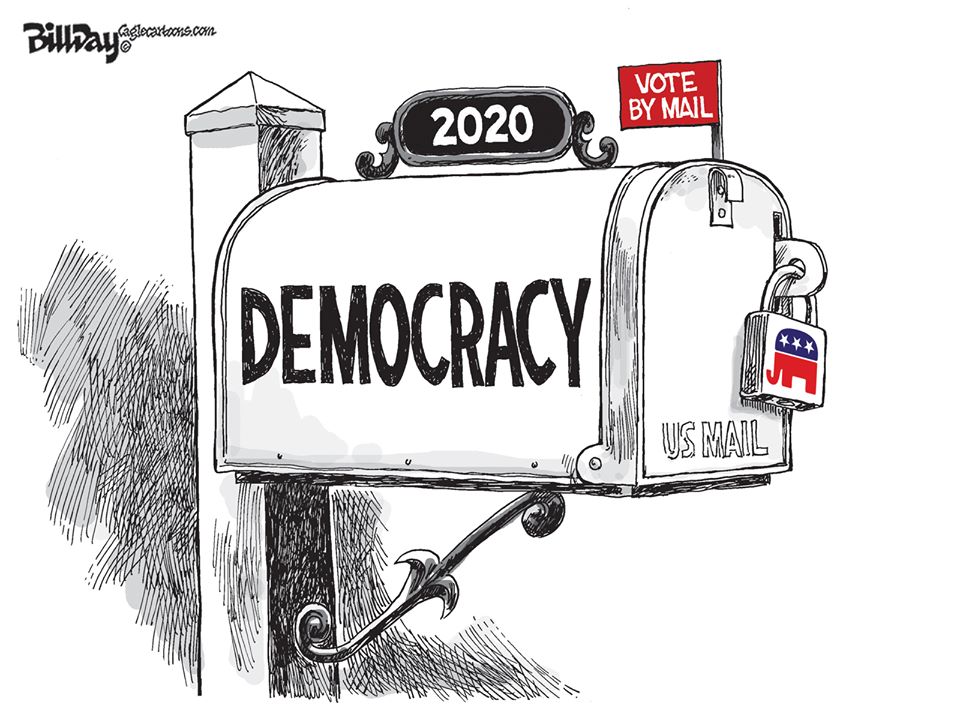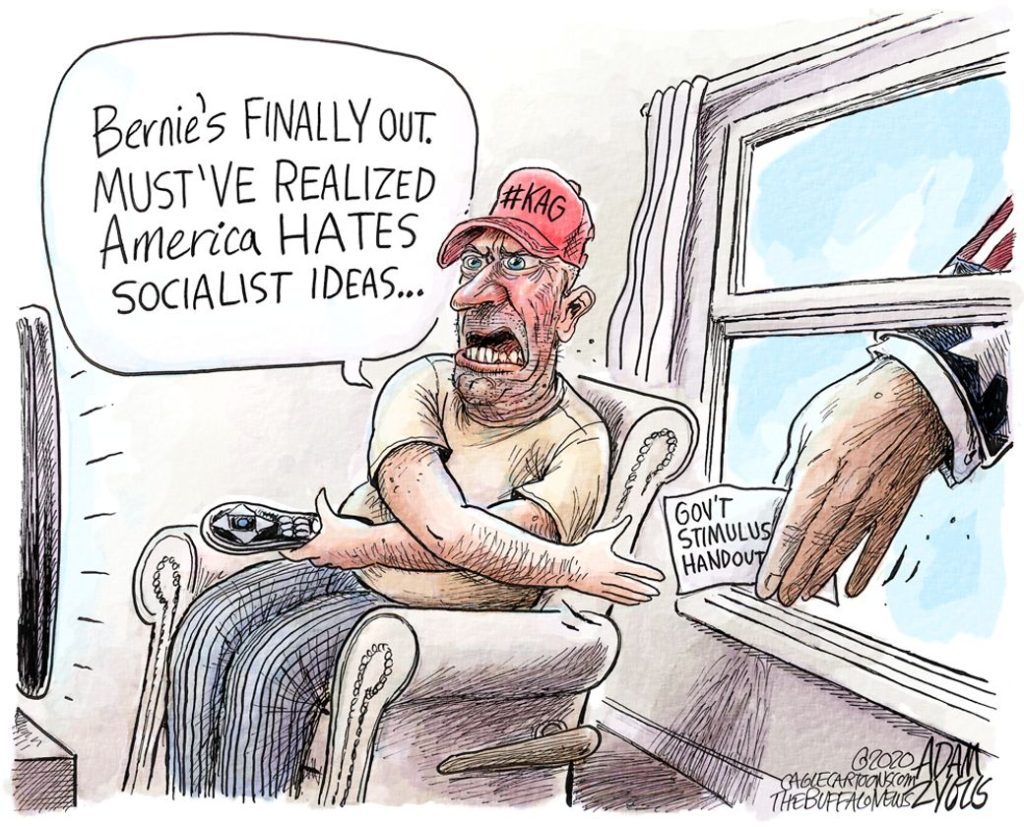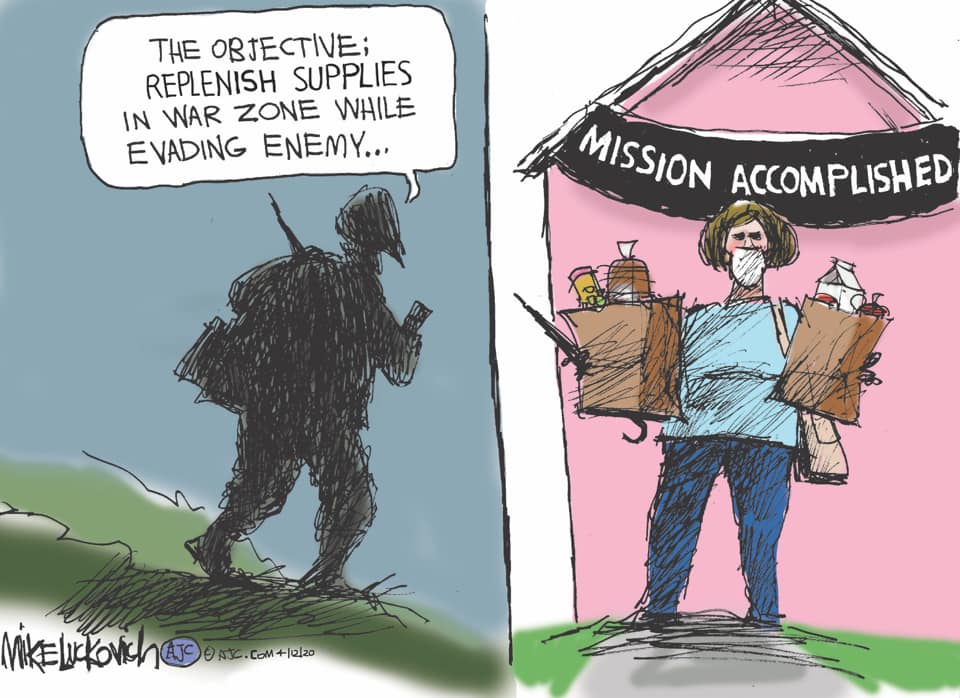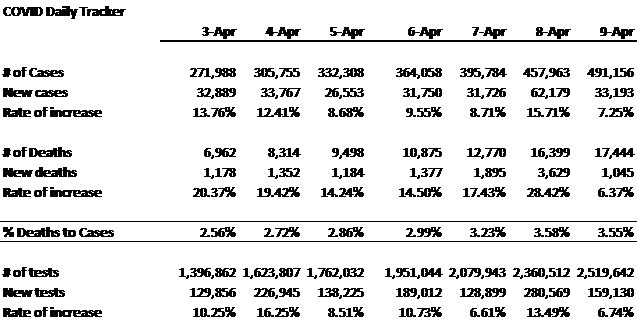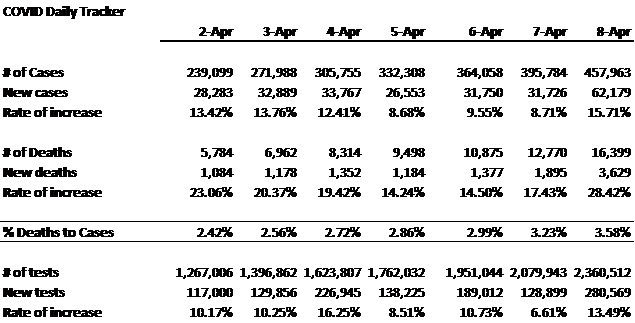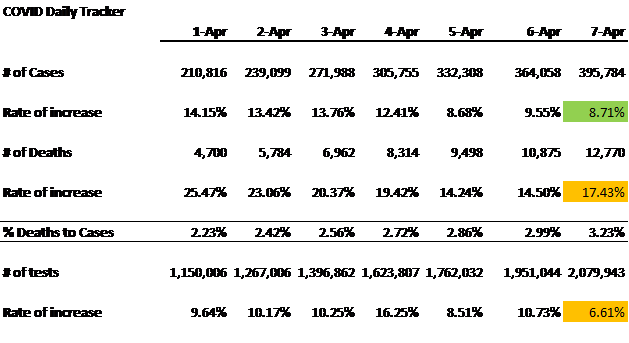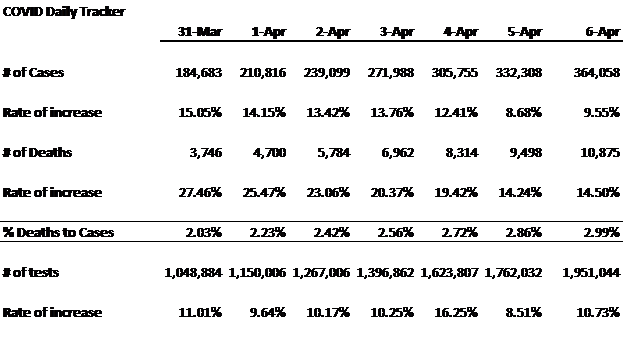The Daily Escape:
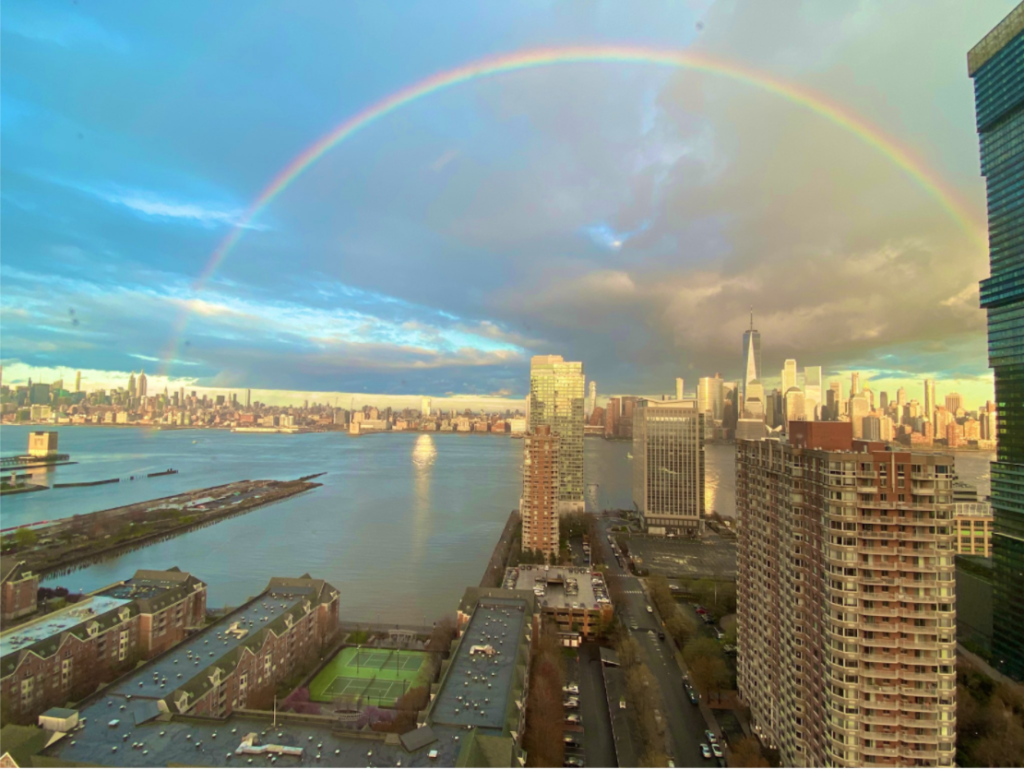
Rainbow appears over NYC at 7pm, the time of change of shift for NYC’s health workers – April 13th 2020 photo by Steve Braband. Thanks to reader Shelley VK.
An argument by those who want to end the lockdown about those who think we should keep it is: “You have shut down the economy because you think even one death is too many.”
That is a misrepresentation of what America’s governors have done. They really have said: “We reduced the economy and restricted daily activities because otherwise, as many as a million people might die.”
What is missed by the “live free or die” folks is that these actions were taken to reduce the risks to human life from the pandemic. They say, you shouldn’t ask us to stay locked down, because “life is full of risk anyway”.
To a degree, they are correct. Lockdowns only work for the privileged. They don’t work for everyone, because the level of income support and debt relief provided by the government is inadequate to the need. If landscapers are not essential in a state, they don’t work. But since they live paycheck to paycheck, they won’t be able to buy food. And when they see others working and earning, that’s got to be angering.
If we ask people for sacrifice and compliance, the country must at least secure their short term needs.
Since the government isn’t providing adequately for those needs, rebelliousness, non-compliance, and virus denialism are on the rise, as we saw in Thursday’s large demonstration in Michigan.
In Connecticut, Wrongo’s home state, the major issue every spring is passing the town budget. With a COVID-19 shutdown in effect, Governor Ned Lamont (D) issued an executive order suspending in-person voting for the next fiscal year’s budget. And there is no vote by mail option in CT.
His order has been met with livid anger on the right and left, conjuring up “no taxation without representation” and calls to “stand up for your rights”. People are saying if they can shop using social distance, why can’t they vote using social distance?
What angers many in town is that voters have rejected several budgets in recent years. The town then lowers the numbers, and it goes back to voters who eventually approve it. They could simply roll over last year’s approved budget, but instead, they’re going to pass a budget increase along with an increase in taxes, without ratification by voters.
The executive order seems wrong-headed, and it’s making people very angry. And so non-compliance will grow, as will denialism that the virus is a serious health problem.
All of this may help the virus flare up again soon.
In a comment, blog reader Terry McKenna brought up the concept of the “Tragedy of the Commons”, the idea that all individuals have a right to consume a resource even if it comes at the expense of other individuals. If demand overwhelms supply, every individual who consumes an additional unit directly harms all others who can no longer benefit from it.
Most Americans don’t think about how their actions impact others. Most are unwilling to even temporarily comply with limitations placed on them for the common good. With Operation Gridlock in Michigan, we’re seeing more proof that when human health and safety go up against the almighty dollar, humans will lose.
People should remember that finding a vaccine for the virus is not a sure thing. There’s also little reason to believe that once a vaccine is found, that it will be completely effective. The longer people are allowed to think that universal Coronavirus immunity is just around the corner, the angrier they will get when that isn’t the case.
Until we know if a vaccine is likely or not, the current political climate won’t be conducive to rational discussions about difficult decisions. The virus can’t spread itself, but it seems to have plenty of helpers.
On this spring Saturday, let’s forget about non-compliance and the Coronavirus for a few minutes. Let’s have a brief respite, and indulge in a Saturday Soother.
Start by inviting your besties to a Quarantini video conference. The term “Quarantini” was actually coined several years ago on the podcast “This podcast will kill you”, hosted by two disease ecologists/epidemiologists. Wrongo prefers Irish single malts, but pour whatever makes you happy. And make a toast: Confusion to our enemies!
Next, settle back and spend a few minutes watching and listening to a parody tribute to NY Governor Andrew Cuomo, from Randy Rainbow, “ANDY!”:
Those who read the Wrongologist in email, can view the video here.


